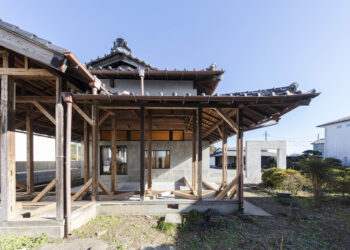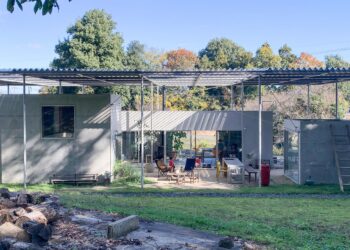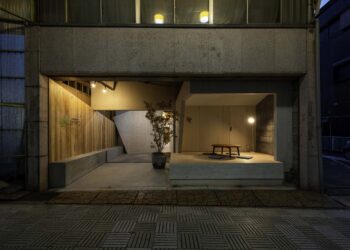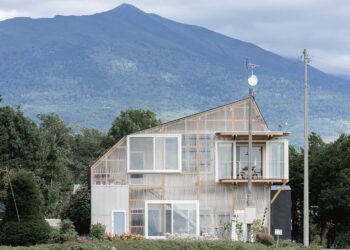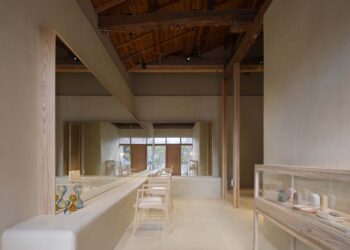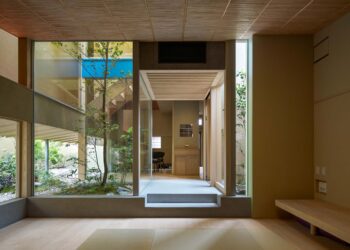Humbly nestled under the earth offering a serene place for rest
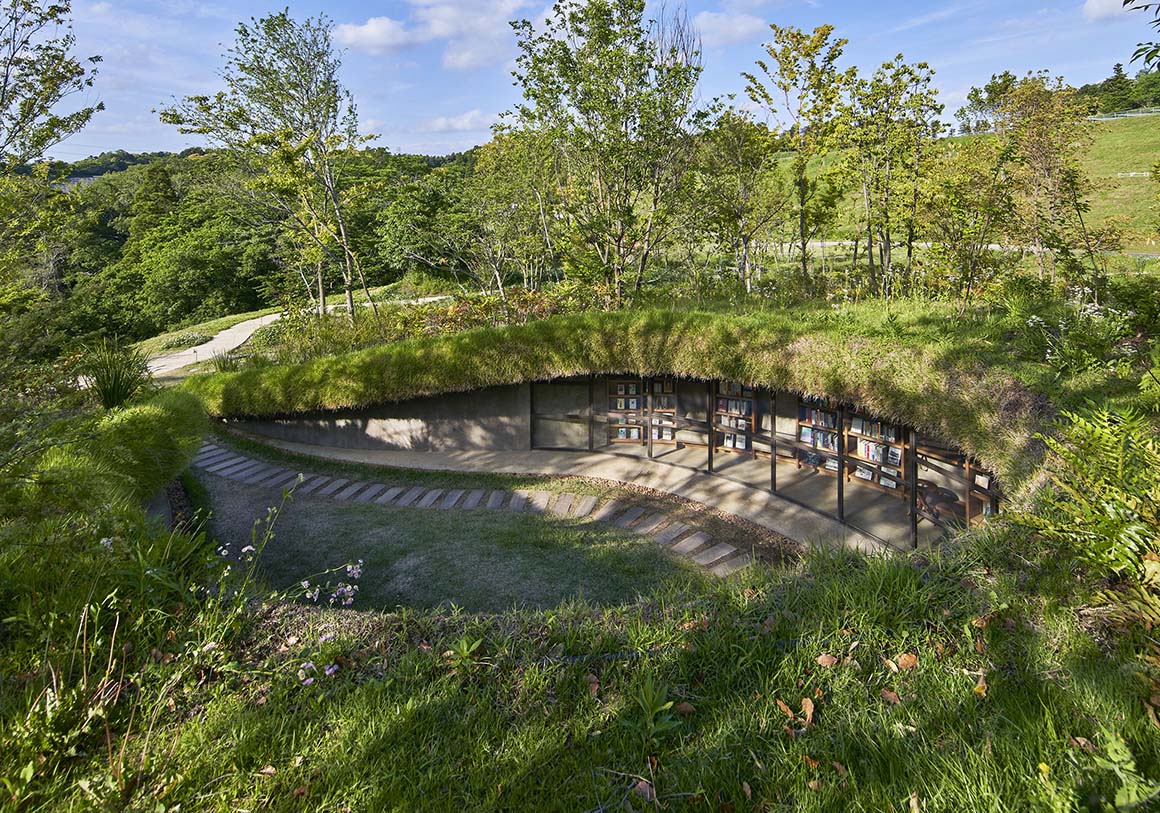
Plowing fields on sunny days and reading books on rainy days—such is the life at the ‘Library in the Earth’ in Kisarazu City, Chiba Prefecture, Japan. This unique library is situated in a corner of KURKKU FIELDS, a complex operated by a nonprofit agricultural cooperative. The site was originally flat, dry land strewn with construction debris, lying on top of a valley.
The project aimed to restore the lush valley that led to a pond known to farmers as Mother Pond. The architects envisioned a building that would exist humbly beneath the cultivated soil layer, allowing plants and microorganisms to thrive above it. Their goal was to create a small cleft in the earth, offering a tranquil place for farmers to rest.
Upon entering the driveway through a small gap in the ground, visitors encounter a teardrop-shaped pavilion. Bookshelves extend from the edges of an enclosed courtyard to another circular space inside, forming a seamless connection between the outdoor and indoor environments.
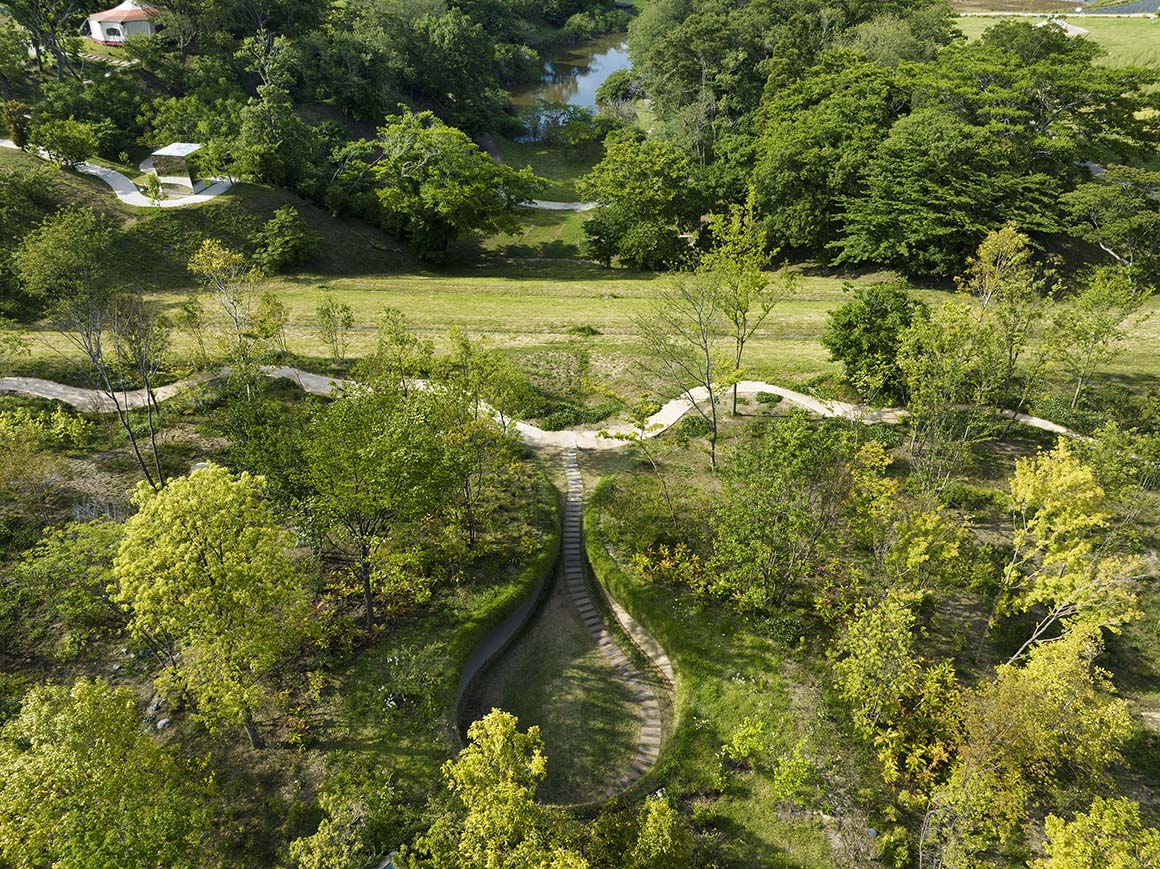
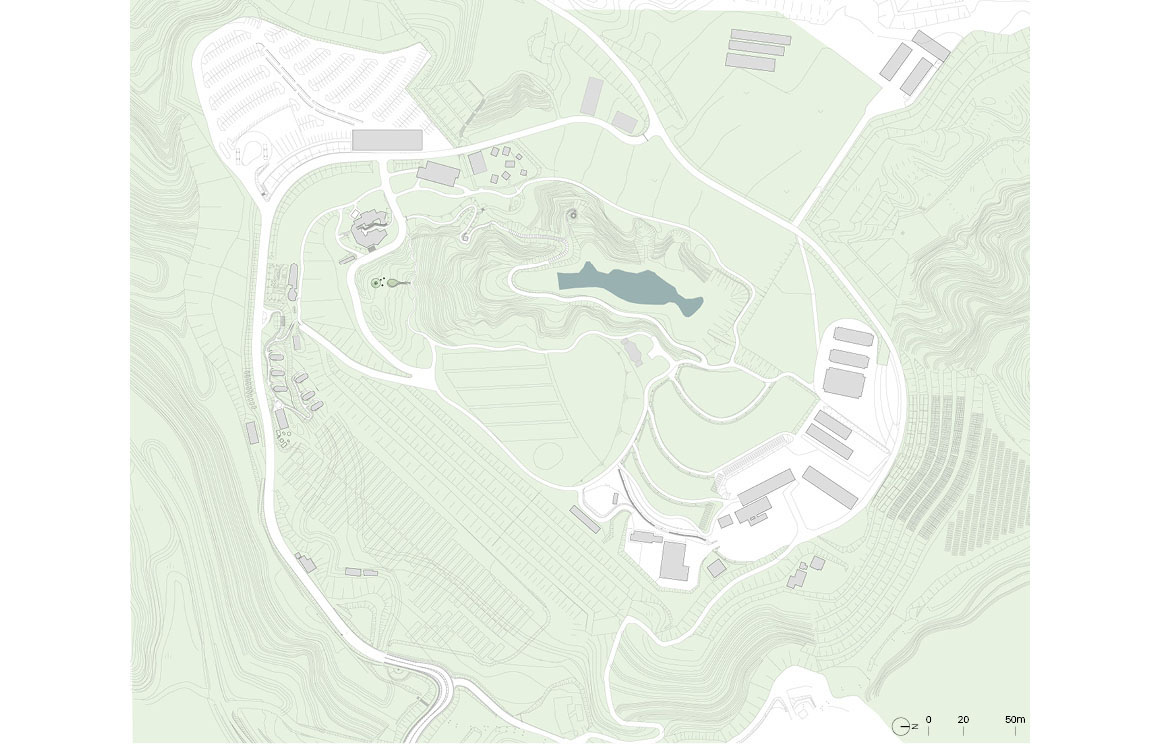
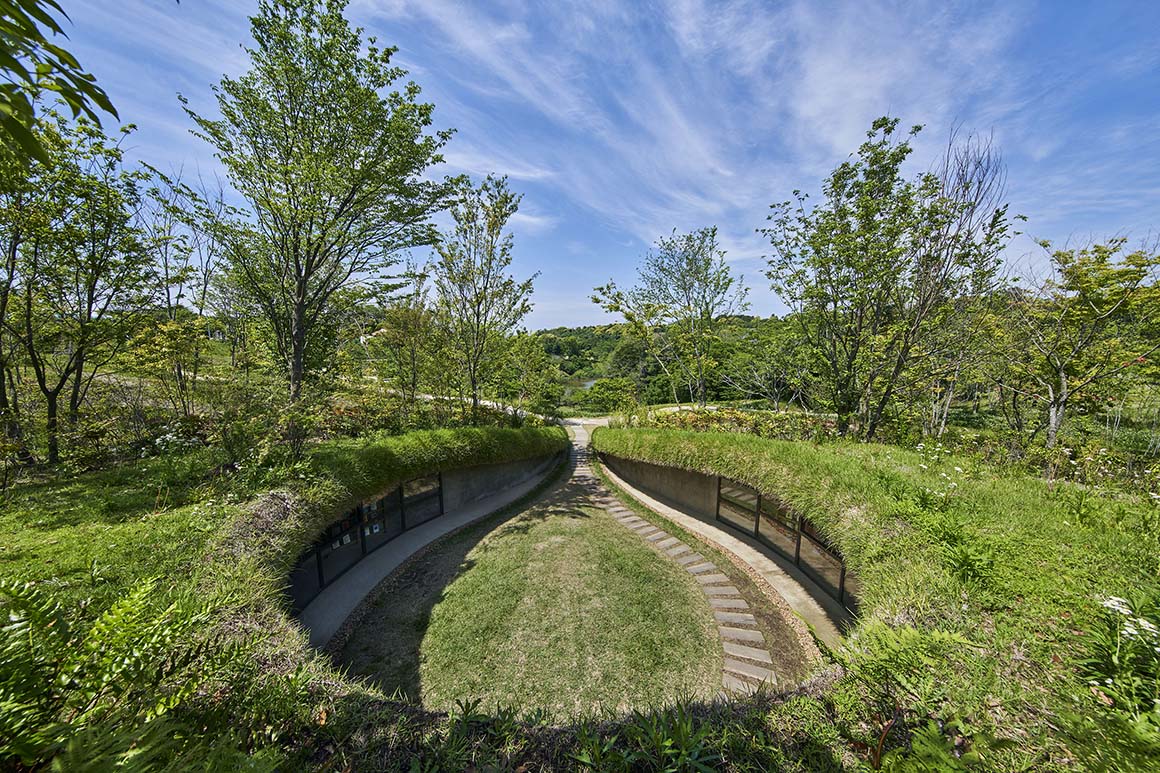
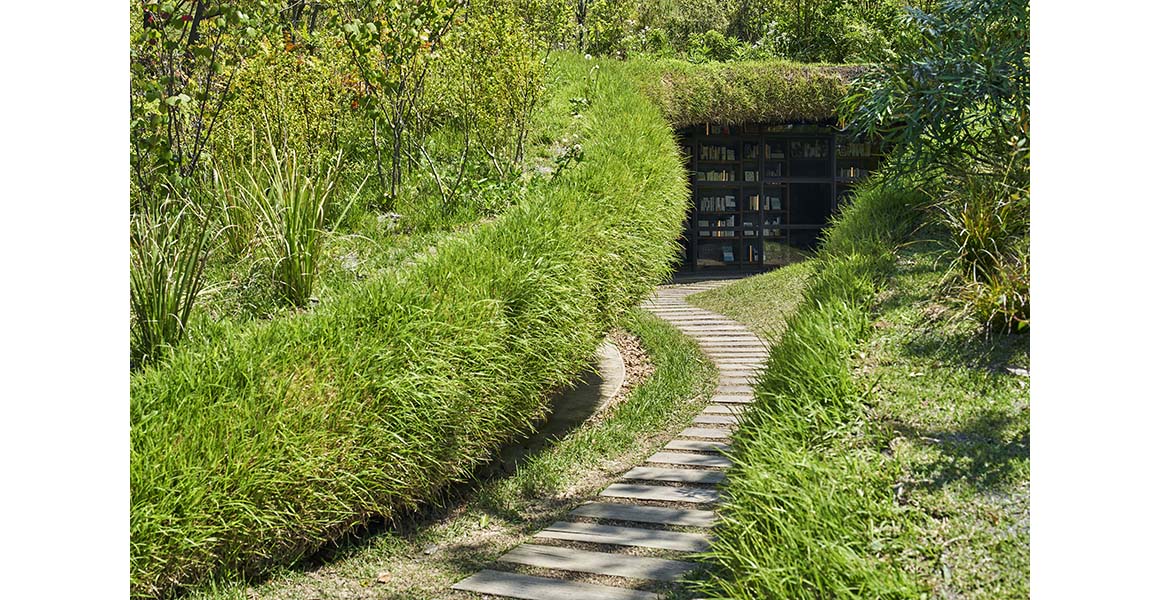
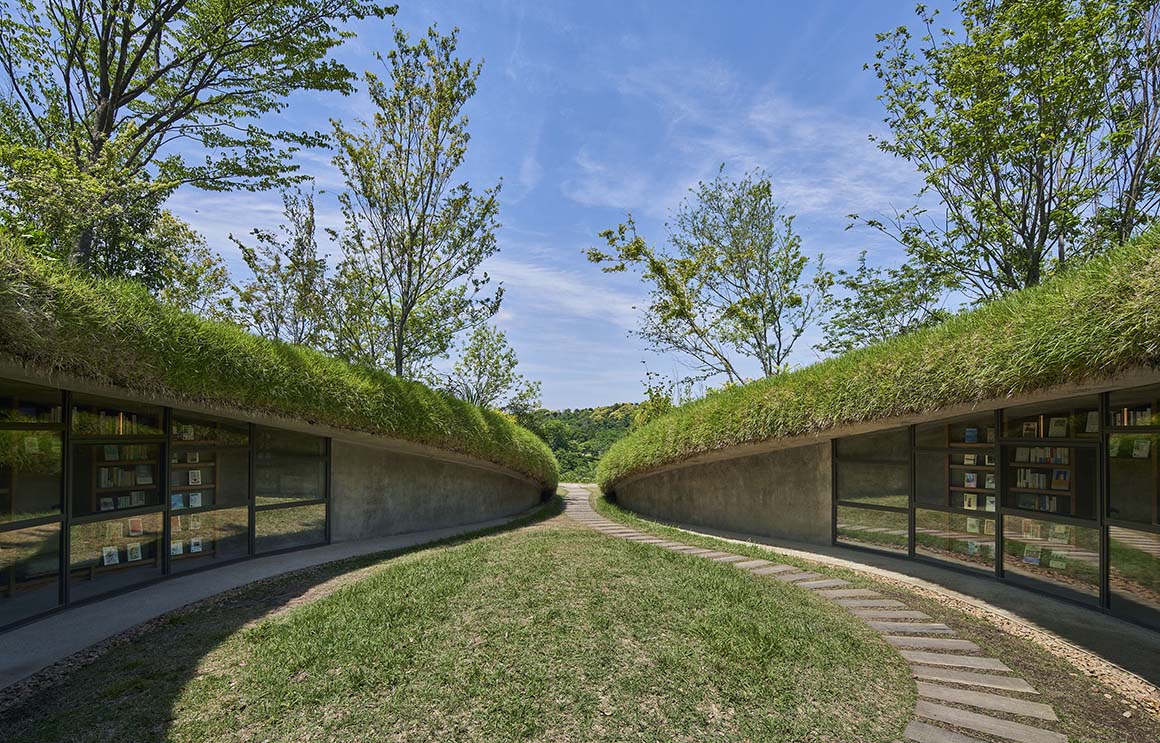
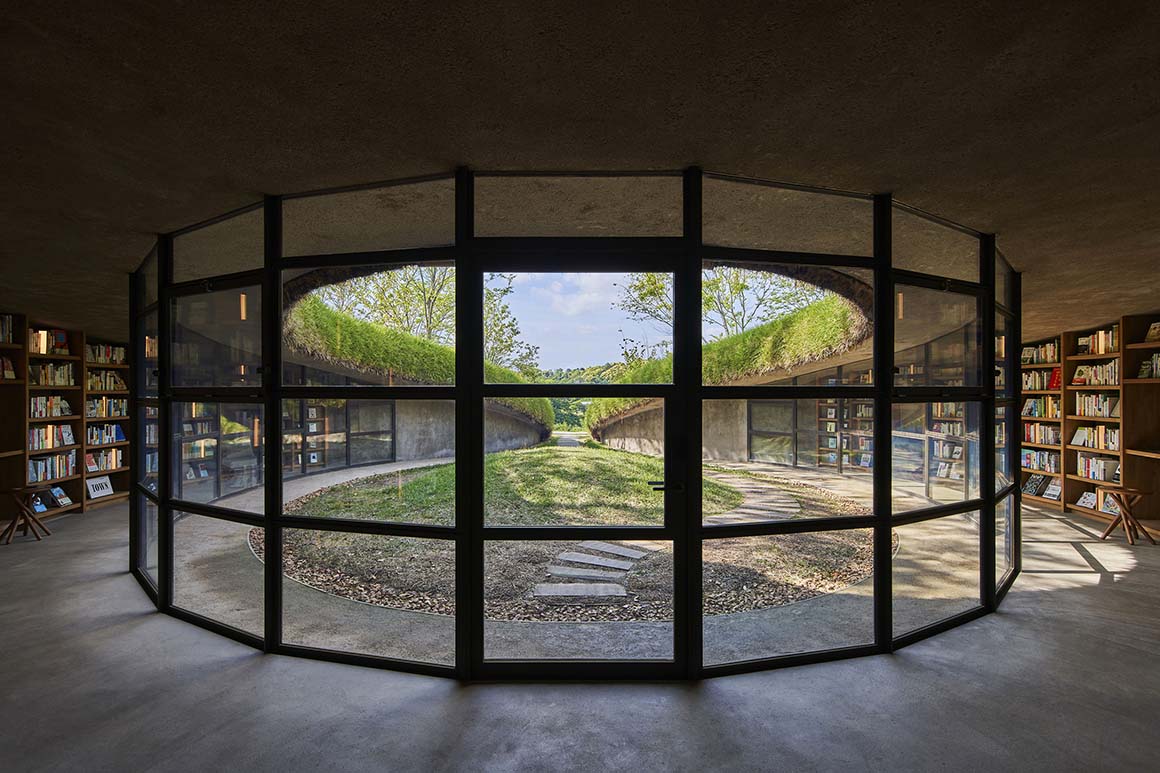
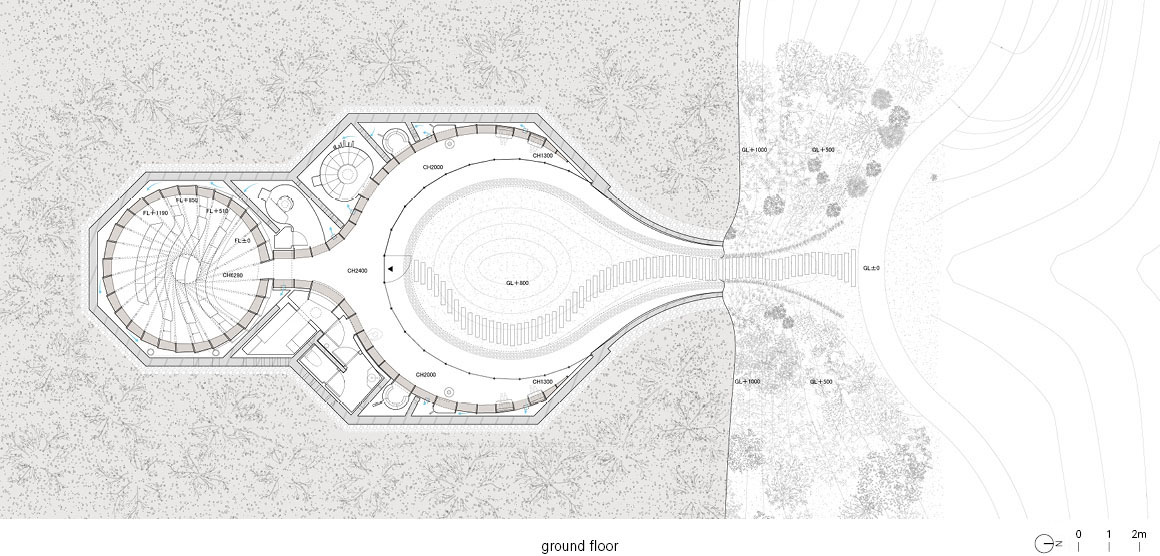
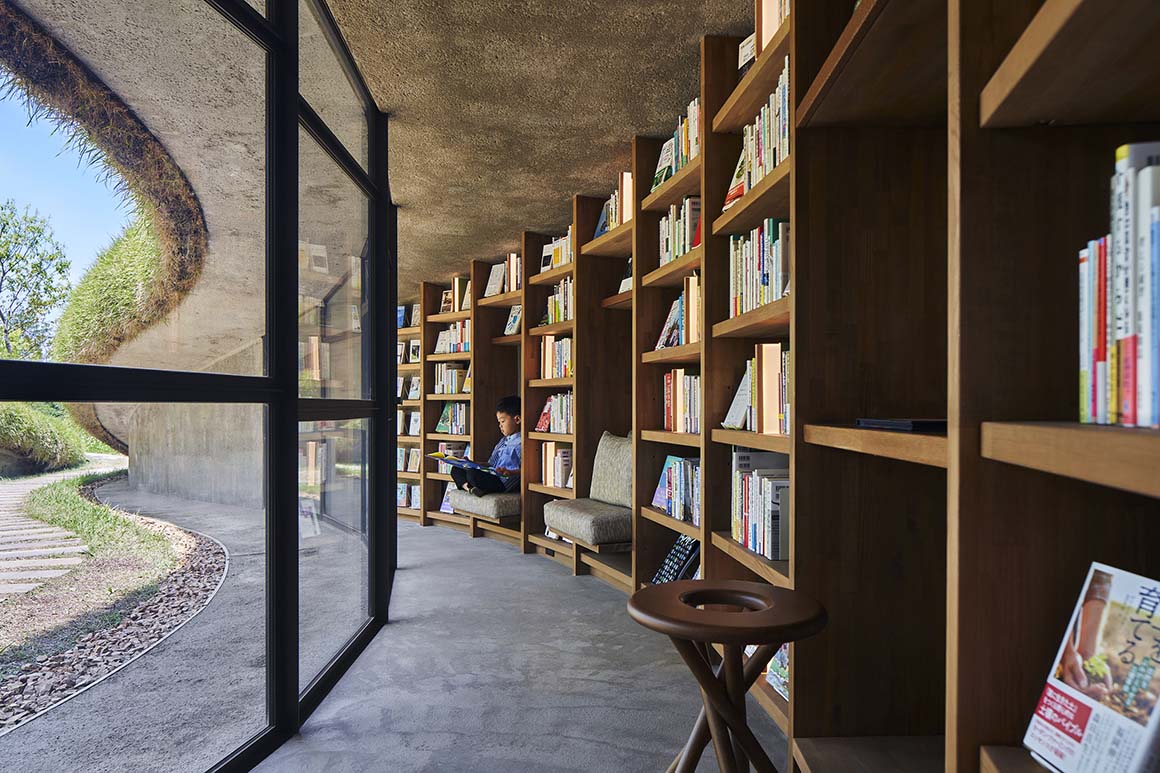
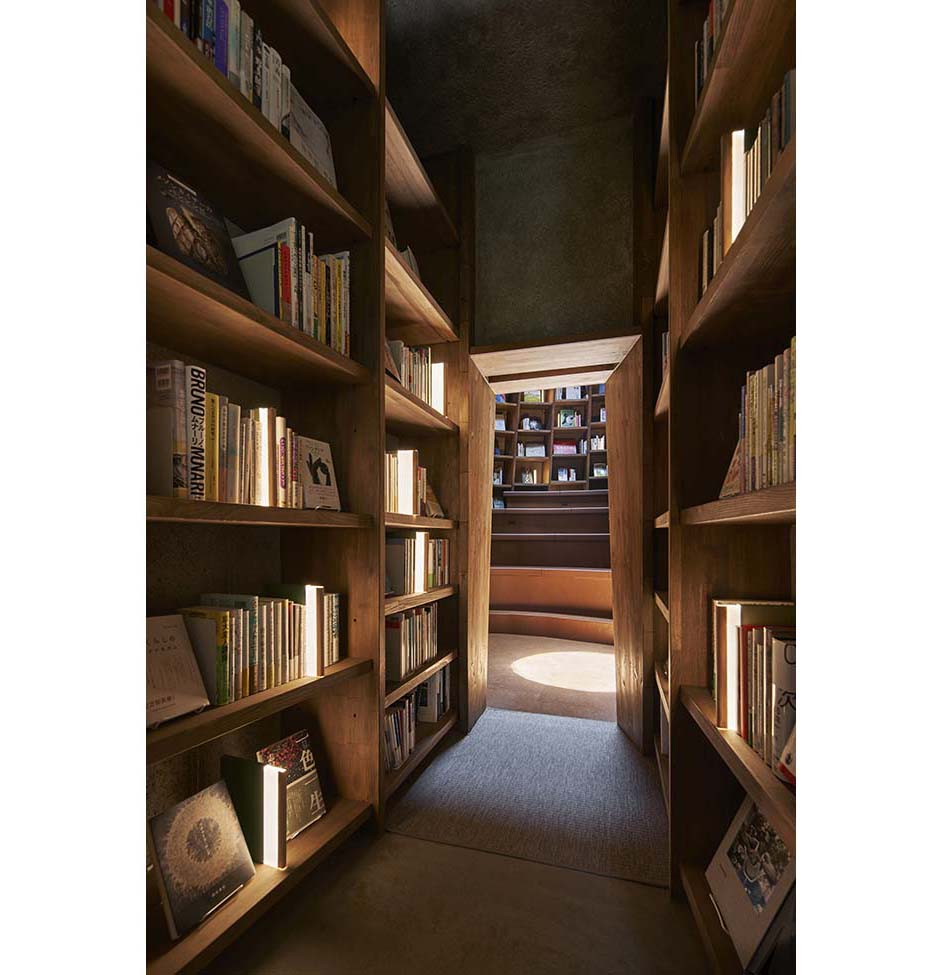
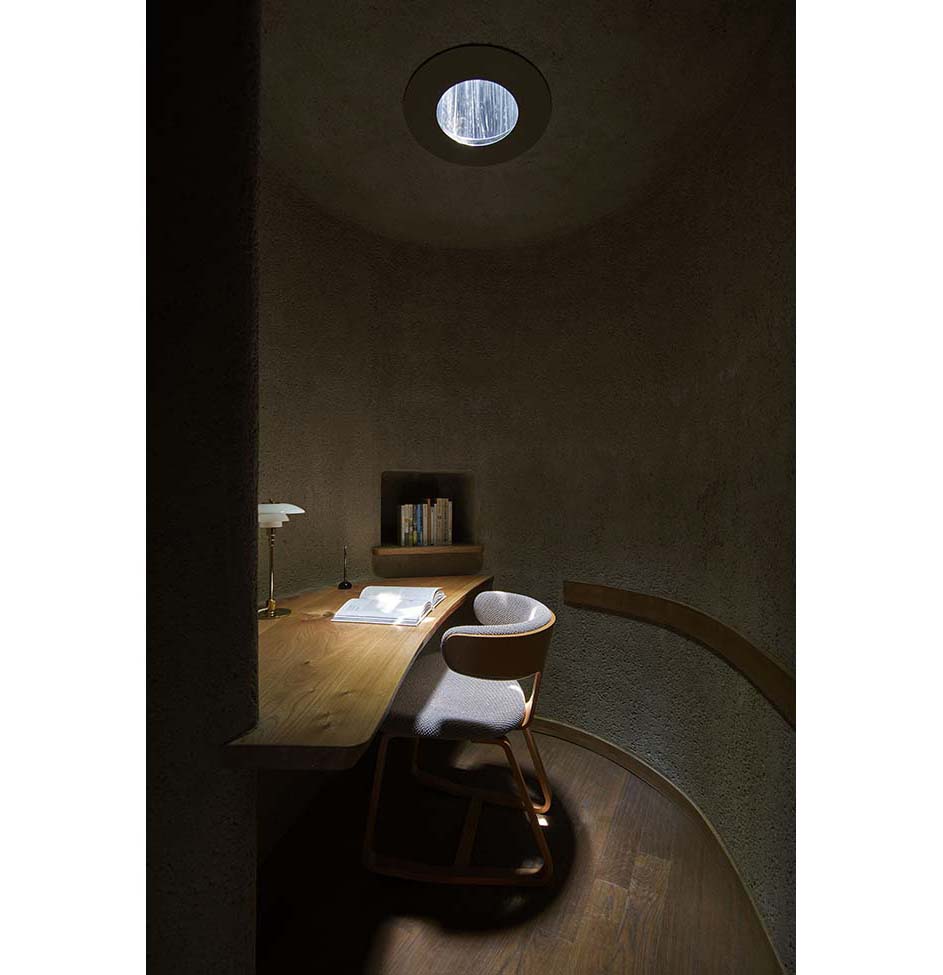
Architectural elements such as beams and columns are omitted, with concrete slabs protruding from load-bearing retaining walls and buttresses. The floors, walls, and ceilings are all finished in earth, creating a unified, natural aesthetic. Grass planted on the roof extends lushly to the slab’s edge, maintaining a sense of dampness and balancing moisture throughout the seasons.
The ceiling heights inside the library are determined by the slope of the ground, creating areas with low ceilings and small hidden rooms accessible only to children. At the deepest part of the library, there is a hall for storytelling. In the underground grotto, hidden as if lifted from the sodden earth, bookshelves surround tiered seating, displaying books for farmers and children’s picture books.
A vertical frame of 40mm-thick bookshelves extends overhead, with thin pillars supporting successive pillars in a circular formation. This mutual support system symbolizes the agricultural community of KURKKU FIELDS, emphasizing collective strength and interdependence. At the center of the structure, a top light frames a view of the blue sky with floating clouds. A beam of light passing through a small opening creates a camera obscura effect, illuminating the space. This small aperture allows a glimpse of the natural weather, reinforcing the library’s humble positioning below the earth—a symbol of life’s source and motherhood. The library provides a serene place of rest, coexisting harmoniously with the surrounding ecology.
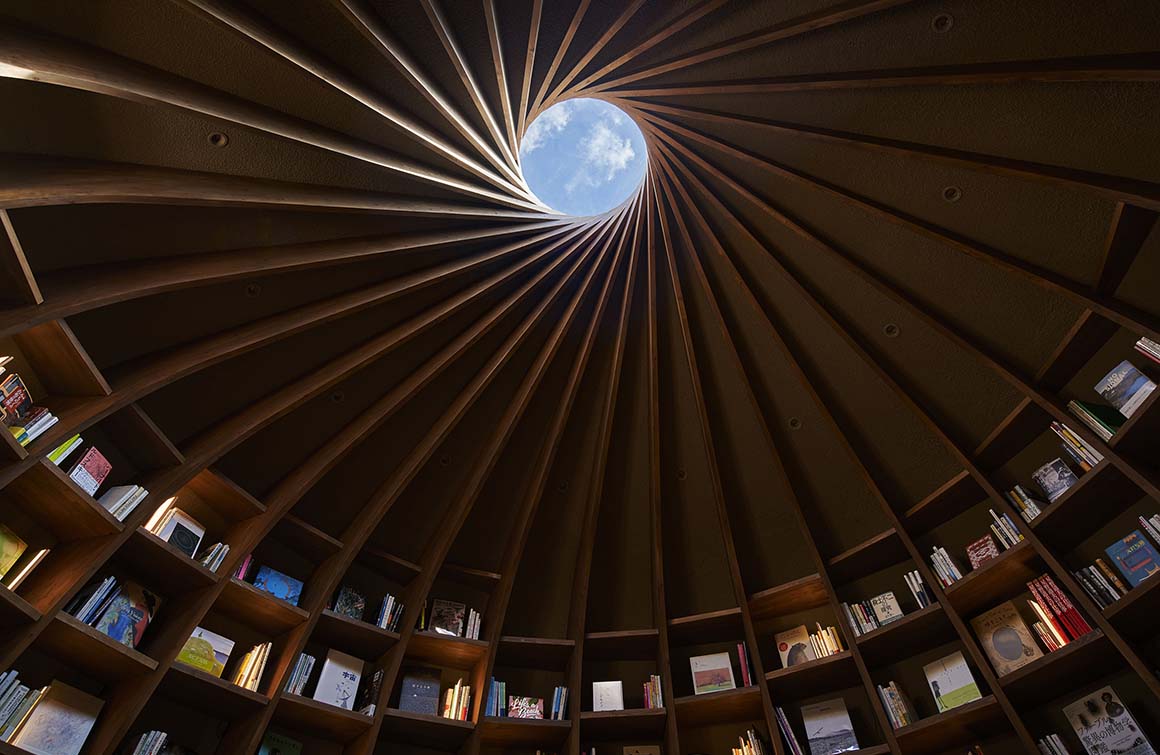
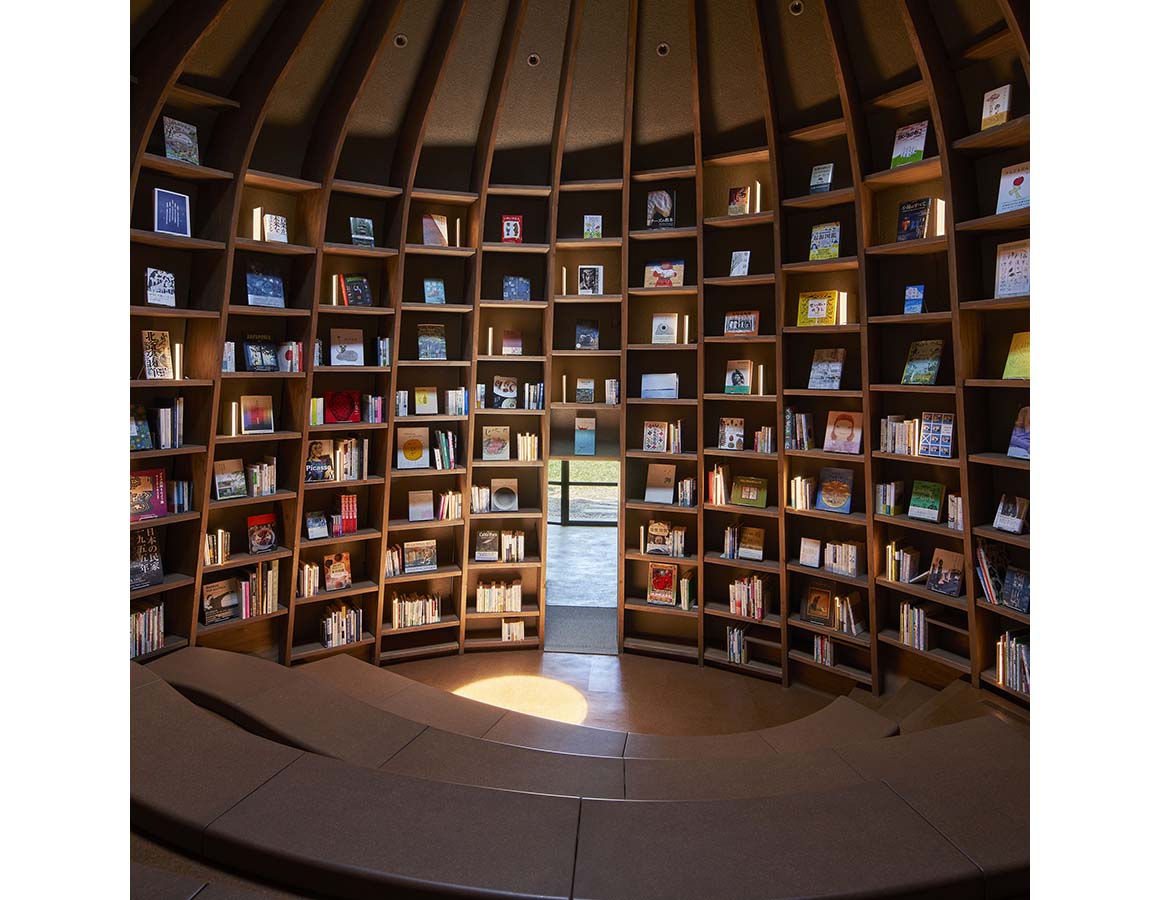
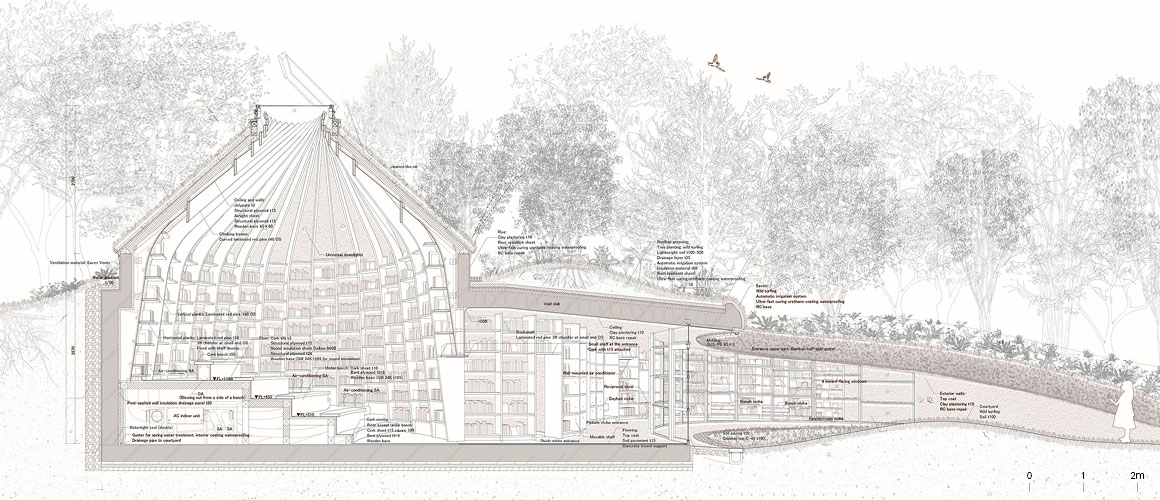
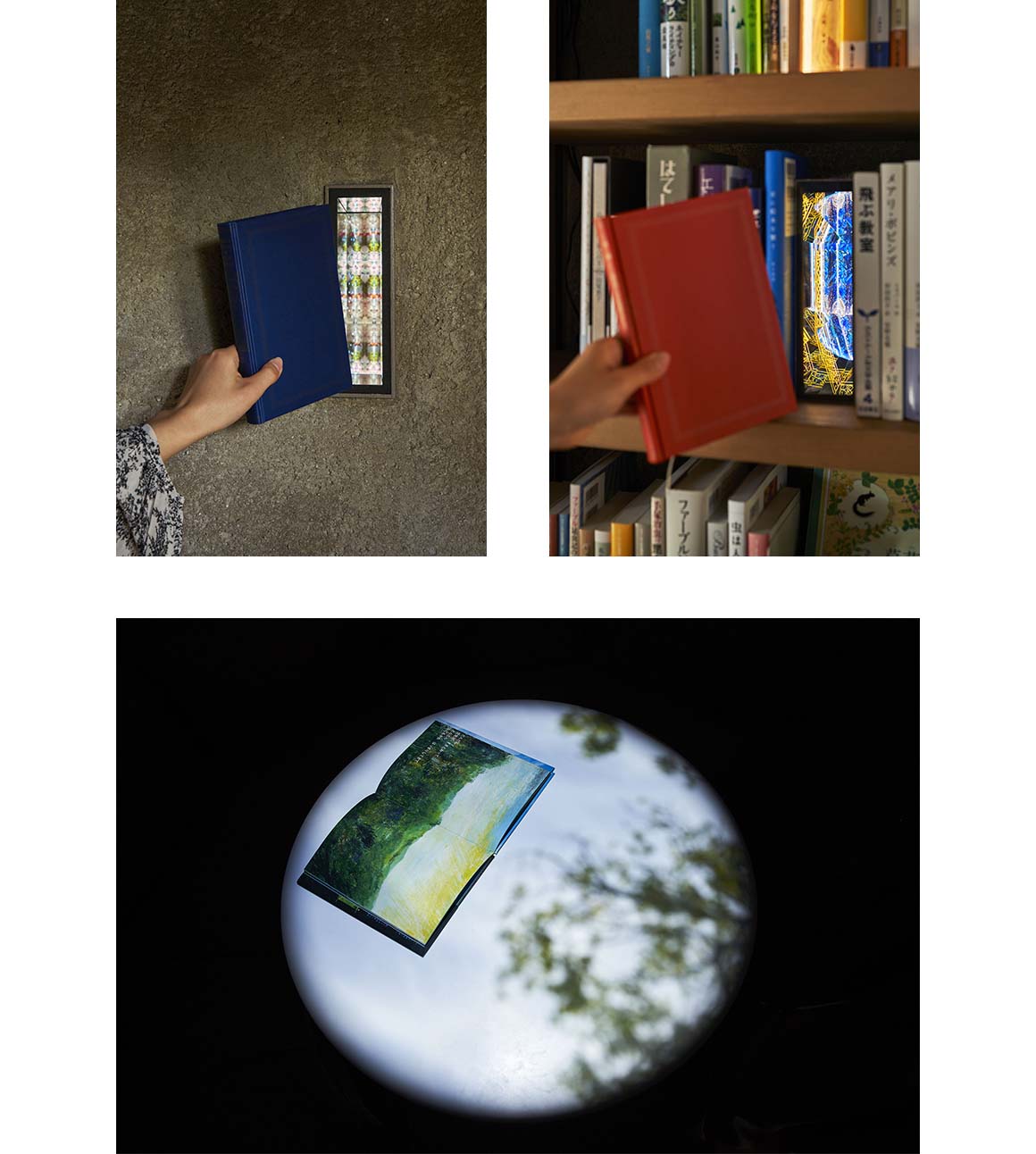
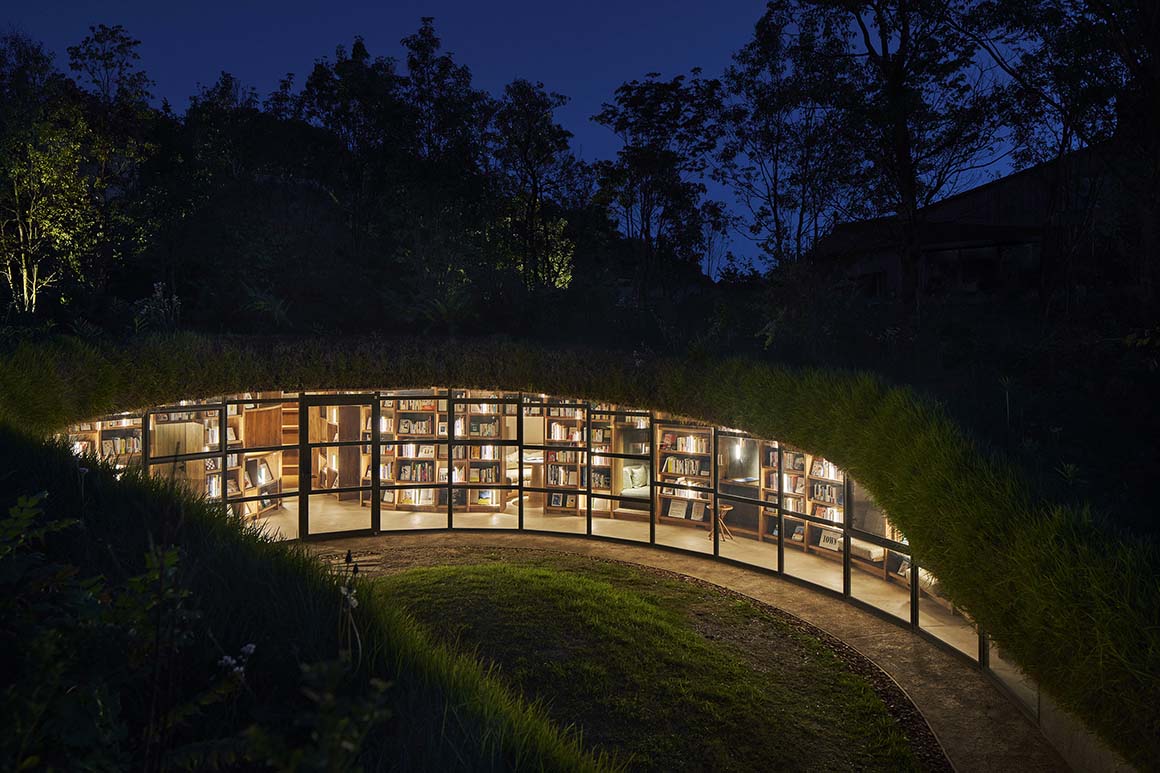
Project: Library in the Earth / Location: Kisarazu, Chiba, Japan / Architect: Hiroshi Nakamura & NAP / Structural design: Kanebako Structural Engineers / Use: Library / Site area: 732.02m² / Gross floor area: 113.09m² / Structure: RC + Timber / Completion: 2022.4. / Photograph: ©TOREAL_Koji Fujii (courtesy of the architect)





























